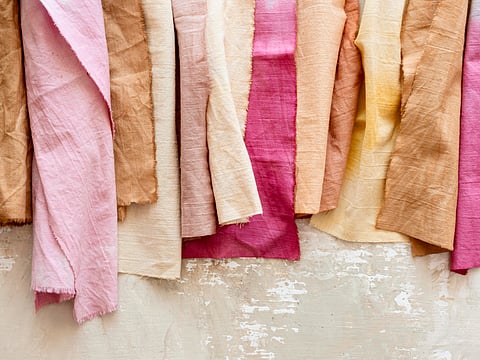
- LIFESTYLE
- FASHION
- FOOD
- ENTERTAINMENT
- EVENTS
- CULTURE
- VIDEOS
- WEB STORIES
- GALLERIES
- GADGETS
- CAR & BIKE
- SOCIETY
- TRAVEL
- NORTH EAST
- INDULGE CONNECT

Cotton holds a special place in India’s history, economy, and daily life. As one of the world’s largest producers and exporters of cotton, India has a long and rich tradition of cotton cultivation and textile craftsmanship. From the ancient hand-spun khadi to today’s modern organic varieties, different types of cotton have become popular across India for their unique properties, regional significance, and growing awareness around sustainability and comfort.
India is home to several types of cotton, each with its own appeal. Desi cotton, also known as indigenous cotton, has been grown for centuries in India’s dry regions. It is naturally pest-resistant and well-suited to Indian climates, making it a sustainable and hardy option for farmers. Though its fibers are shorter and coarser, desi cotton is commonly used in handloom fabrics, khadi garments, and traditional wear. Its popularity has seen a resurgence due to the growing interest in eco-friendly, local textiles.
Shankar-6, a hybrid variety grown mainly in Gujarat, is one of the most widely cultivated cotton types in India today. Known for its relatively long staple length and quality fiber, it is used in mass-market textiles and widely exported. Its consistency and affordability make it a staple for everyday clothing, from shirts to sarees.
Organic cotton has gained momentum in recent years, especially among urban consumers. With increased awareness about environmental sustainability and skin-friendly fabrics, organic cotton — grown without chemical fertilizers or pesticides — is becoming a preferred choice for children’s wear, casual clothing, and home textiles. Indian brands are now actively promoting organic cotton as part of their ethical and eco-conscious identity.
Luxury segments in India are also embracing Egyptian and Pima cotton, especially for premium shirts, bedsheets, and bath linens. These imported varieties are prized for their smooth texture and high durability, catering to the growing middle and upper-class markets that seek comfort and refinement.
India’s cotton landscape reflects both its deep-rooted heritage and the changing aspirations of its people. As consumers become more conscious of quality, sustainability, and tradition, the popularity of different cotton types continues to evolve — blending the past with the future.